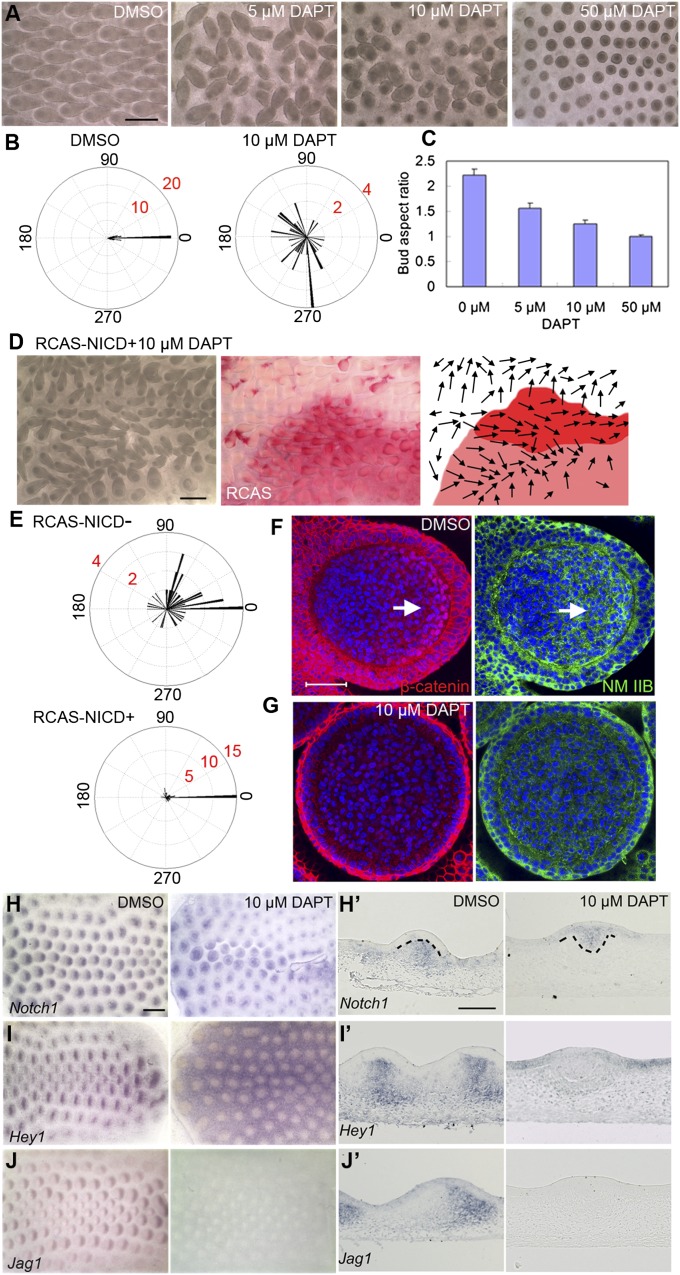Fig. 5.
Inhibition of Notch signaling by DAPT causes drastic feather misorientation and dose-dependent inhibition of bud elongation. Meanwhile DBZ nuclear β-catenin and NM IIB level are dramatically decreased. (A) E7 skin explants cultured for 4 d with DMSO or different doses of DAPT. (B) Summary of feather bud orientation relative to the body A–P axis upon DMSO (n = 40) or 10 μM DAPT (n = 40) treatment, respectively. (C) Feather buds’ aspect ratio at different DAPT concentrations (n = 20 for each concentration). (D) E8 chicken embryo dorsal skin (electroporated with RCAS-NICD at E3) cultured with 10 μM DAPT for 72 h. Red signal shows RCAS positive area. Arrows in the schematic drawing represent feather bud orientation. (E) Divergence of feather bud orientations from the body A–P axis in the RCAS-NICD negative and positive area, respectively (n = 44 for each condition). (F and G) Confocal image of a feather bud on E7 skin explant cultured for 1.5 d with DMSO and DAPT (10 μM) in media, respectively. (Arrow) nuclear β-catenin positive cells. (Scale bar: 50 μm.) (H–J) Whole-mount in situ hybridization of DMSO- and DAPT-treated skin explants (after 40 h in culture) with Notch1, Hey1, Jag1 probes, respectively. (Scale bar: 500 μm.) (H′–J′) Section in situ hybridization of DMSO- and DAPT-treated skin explants with the three probes, respectively. (Scale bar: 100 μm.)

